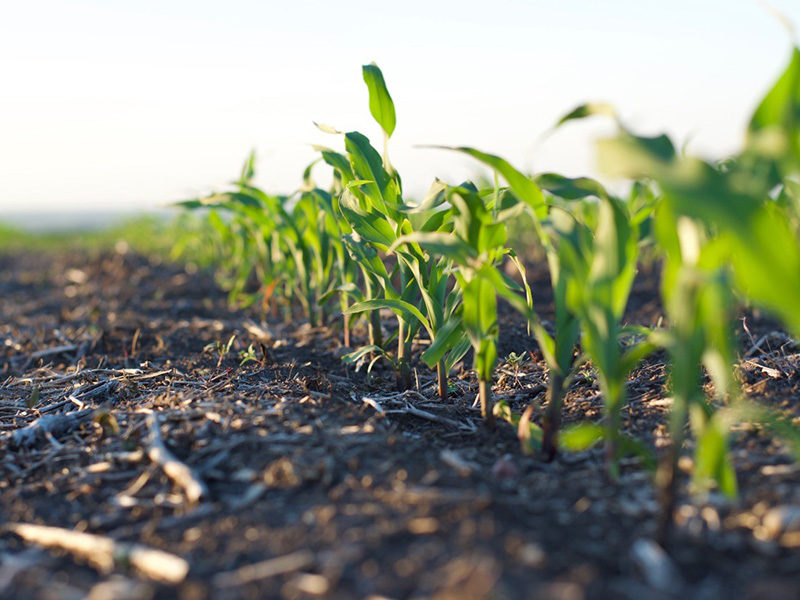To combat weeds, farmers use a variety of tools and methods. By understanding the strengths and downfalls of each tool, a farmer can make the best decisions for his or her operation to keep pesky weeds out of the field.
One tool farmers can turn to for weed control is applying herbicides. New research is helping us understand a specific herbicide even better: atrazine.
Atrazine is one of the most common herbicides used in the United States. It can be used to manage weeds in crops like corn, sorghum, sugarcane and turf. The chemical kills weeds by preventing photosynthesis in the plant.
A benefit of herbicides, like those with atrazine, is that they reduce the need for tillage. In addition to its effects on soil health, tillage can increase erosion of precious soil. Reducing tillage conserves our soil by preventing erosion and maintaining healthy soil structure.
A downfall of atrazine, though, is that it can sometimes make its way into streams and rivers.
After the chemical is applied to a field, atrazine breaks down in the soil and turns into another compound, called deethylatrazine (DEA). This is a good thing, since DEA is less toxic to aquatic organisms than atrazine.
In recent years, atrazine use has been decreasing. However, despite the decrease in atrazine use, concentrations of the secondary compound, DEA, have been increasing.
Karen Ryberg and her team thought there must be more to this puzzle than just atrazine use.
Ryberg, who works at the United States Geological Survey, wanted to determine the factors, other than usage, that influence trends in herbicide concentrations in streams.
The most common conversion of atrazine to DEA is through the activity of soil microbes – like fungi and bacteria. Therefore, atrazine breaks down quicker when it has more contact with soil microorganisms.
“Based on previous studies, we predicted factors affecting the atrazine concentrations in streams,” says Ryberg. “These included corn acres in the watershed, weather, climate and management practices.”
“In our study, we used existing data from 2002 to 2012 spanning many areas of the country,” explains Ryberg. Then models were used to analyze the data and test the team’s predictions of what caused the atrazine and DEA trends in the streams.
In the 1990s, new regulations addressed surface water contamination concerns. These regulations lowered application rates of atrazine for crops, and even prohibited its use near water wells. The goal was to reduce the overall concentration of atrazine in water.
“Concentration and use trends show that past atrazine regulations, especially in the Midwest, were successful,” says Ryberg. “More of the atrazine broke down into DEA before reaching streams.”
Despite an increase in the amount of corn acres grown between 2002 and 2012, the study showed atrazine use decreased in most areas of the United States.
Ryberg’s study also discovered that atrazine turns into DEA faster in dry areas without tile drainage. Tile drains can be installed underground in farm fields to help move water and prevent flooding. Tile drains are like stormwater drains for farm fields.
Because tile drains help water from the field move faster through underground pipes, the water has less time to come in contact with soil. Therefore, soil microorganisms have less time to break down atrazine to DEA before water carries it out of the field toward nearby streams.
This finding means there may be more challenges with atrazine levels in the future. As farmers anticipate climate change and wetter field conditions, more tile drains may be needed in order to grow crops in adequate soil conditions.
Moving forward, Ryberg would like to build on this research for monitoring pesticides. “Ongoing monitoring is important to understand the degradation and transport processes of pesticides,” explains Ryberg.
Farmers will continue to adapt to changing conditions, including weed communities. Pesticide usage will change, and it is an ongoing challenge to monitor for new pesticides or mixtures of pesticides in the environment.
Read more about this research in the Journal of Environmental Quality. This project was funded by the USGS National Water Quality Program’s National Water-Quality Assessment Project.






